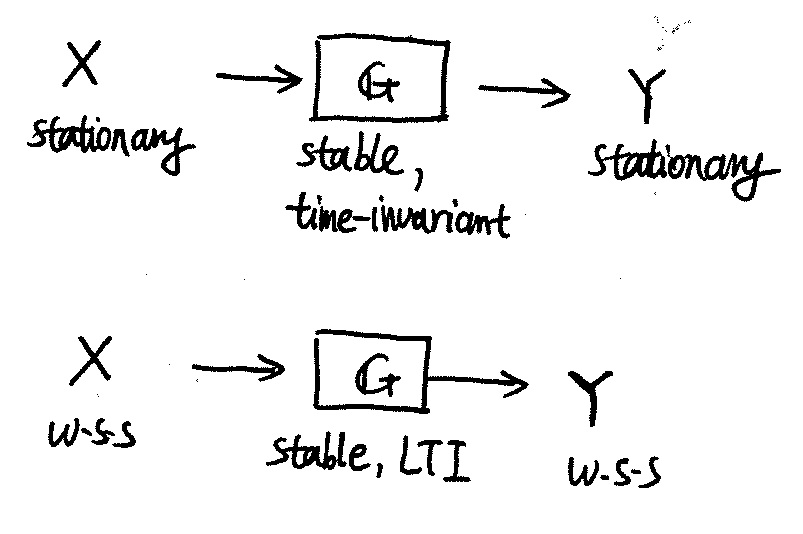Random Process
Basic Descriptions of Random Processes (Chap 12.1)
- \( X(u,t) \) is w.s.s., \( \iff m_X, \text{and } R_X(\tau) / k_X(\tau) / S_X(\tau) \).
- \( R(t_1,t_2) \) is a covariance function, iff it is Hermitian, positive semi-definite.

Two views of stochastic process
A number of procedures have been proposed for the canonical representations of general stochastic processes. Two views are listed below:
- Discrete sample (measurements) approaching a continuous signal. \( X: \Omega\times D \to \mathbb{R} \)
- Function space as the range probability space. \( X: \Omega \to H \)
Random field (RF)
Random field is a measurable function on a product space, where one of the subdomains is a probability space, to the real line.
Symbolically, random field \( \alpha: D\times \Omega \to \mathbb{R} \) is a \( (\mathcal{S} \times \Sigma, \mathcal{B}) \)-measurable or \( ( (\mathcal{S} \times \Sigma)^* , \mathcal{L} ) \)-measurable funcion. Here \( (D, \mathcal{S}, \mu) \) is a deterministic measure space, and \( (\Omega, \Sigma, P) \) is a probability space. Their product space is \( ( D \times \Omega, \mathcal{S} \times \Sigma, \mu \times P) \), with completion \( ( D \times \Omega, (\mathcal{S} \times \Sigma)^{*}, \mu \times P) \). Either Borel measure or Lebesgue measure is applied to the real line.
Think of the deterministic field \(D\) as an indexing set. When \(D\) is finite, the RF can be seen as a random vector, i.e. a finite collection of random variables, or a random sample. When the number of samples approaches infinity, the RF can be seen as a random sequence. When \(D\) is a space with power of the continuum, e.g. the real line or an Euclidean space, the RF is often seen as a general random process.
Random process (RP)
Power Spectral Density (Chap. 14.2, 15.1)
- \( S_X(f) = \mathcal{F}{ R_X(\tau) } \), assumming \( X(u,t) \) w.s.s.
- \( R_X(0) = P_X = \int_{\mathbb{R}} S_X(f) \mathrm{d} f \)
- \( S_X(f) \geq 0, x \in \mathbb{R} \), then \( S_X(f) \) is an even function.
- \( X(u,t), Y(u,t) \) are uncorrelated and \( Z=X+Y \), then \( S_Z(f) = S_X(f) + S_Y(f) \)
- \( S_{XY^{}} (f) = \mathcal{F}{ R_{XY^{}} (\tau) } \), assumming \( X(u,t), Y(u,t) \) jointly w.s.s.
- \( S_X(f) \) does not consist of Dirac delta functions, only if \( m_X =0 \)